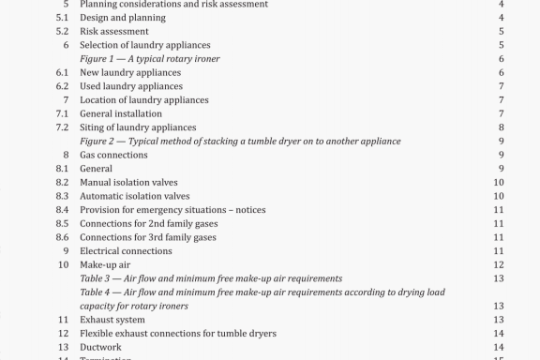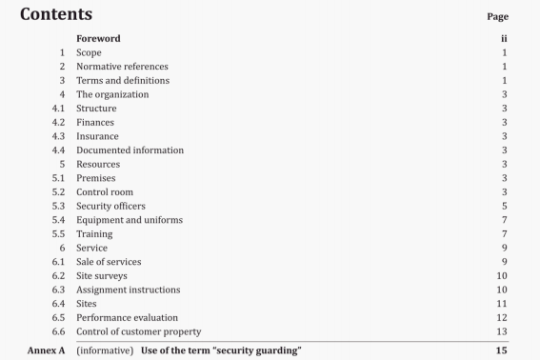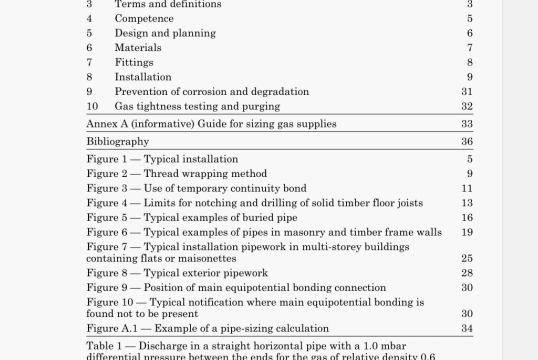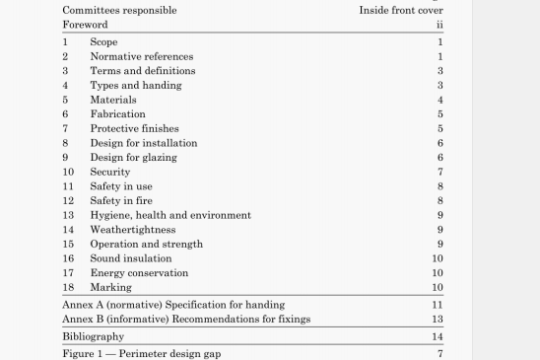BS EN ISO 3807:2013 pdf download
BS EN ISO 3807:2013 pdf download.Gas cylinders – Acetylene cylinders- Basic requirements and type testing.
The compressive strength as determined in accordance with Annex B shall be at least 2 MPa (20 bar).
For safety reasons, the porous material shall be able to prevent the propagation of an acetylene decomposition within the cylinder and shall be of such quality that it enables the acetylene cylinder to meet the requirements of Annex D and Annex E.
Acetylene cylinders equipped with fusible plugs shall pass the lire test described in Annex F in addition.
Where cylinder shells with joggle welds are used, It shall be verified that the welds do not damage the porous material in accordance with Annex G.
To ensure the quality and uniform distribution of the porous material in the acetylene cylinder and the quality and amount of the solvent, test procedures shall be established by the manufacturer of the porous material in accordance with Annexi.
4.3 Solvent content and acetylene content
The solvent shall be compatible with the cylinder shell. For the commonly used solvents acetone and [)MF this is generally the case.
The specified solvent content and the maximum acetylene content for an acetylene cylinder shall be such that the cylinder will meet the requirements specified in AnnexD and Annexi.
The specified solvent content and the maximum acetylene content foran acetylene cylinder equipped with fusible plugs shall be such that the cylinder will meet the requirements specified in Annex F in addition.
4.4 Working pressure
When the cylinder has been filled with the specified solvent content and the maximum acetylene content, and the pressure has reached equilibrium at a uniform reference temperature of 15 C, the gauge pressure in the cylinder shall not exceed the working pressure as calculated in accordance with Annex C.
4.5 CylInder Identification
For the stamp marking of acetylene cylinders see the relevant regulations, Further information can be found in ISO 13769.
In addition, solvent free acetylene cylinders shall bear the words solvent-free painted in a clear and visible manner.
NOTE Attention is drawn to requirements for marking in relevant regulations that might override the requirements given in this International Standard.
4.6 Fusible plugs
For acetylene cylinders equipped with fusible plugs, the fusible plugs shall be sized and selected as to location and quantity so that the fusible plug(s) are capable of preventing bursting of the normally filled cylinder when subjected to a fire test in accordance with Annex F.
The fusible plug shall utilize a fusible alloy having a yield temperature between 98 C and 110 C. The yield temperature is the temperature at which the fusible alloy becomes sufficiently soft to extrude from its holder to permit discharge of acetylene.
The fusible alloy may be installed in a threaded steel or brass plug. The threaded plug shall be fitted into a boss or pad, preferably on the cylinder top or In the cylinder valve. Bottom plugs are not permitted for cylinders used in bundles.
The fusible plugs shall be sample tested for yield temperature and for resistance to extrusion and leakage as a quality control procedure during manufacture and prior to installation into the cylinder in accordance with Annex H.
4.7 Accessories
Valves icr use with acetylene cylinders shall conform to the requirements of ISO 10297, Other accessories should conform to the requirements of appropriate International Standards, where available, e.g. valve guards and caps according to ISO 11117.
5 Type approval
5.1 General requirements
Representative cylinders, selected according to sal. by or on behalf of the approving body, shall successfully withstand the type tests as required in 12 prior to type approval being granted to the manufacturer ol the porous material.
5.2 Request for approval
5.2.1 Range of an approval
A request for approval of acetylene cylinders may cover a range of different cylinder water capacities provided that:
a) the cylinder shells are made from the same type of material (steel or aluminium alloy);
b) the construction of the cylinder shells is similar (either seamless cylinders or cylinders with circumferential joggle welds or cylinders with butt welds only);
c) the nominal outside diameter of the cylinders falls within the range of either:
— <=270mm,or
— >270mm;
d) the cylinders contain the same porous material from the same factory and the same solvent;
e) the specified solvent content per litre water capacity of the cylinder shell is the same:
f) the maximum acetylene content per litre water capacity of the cylinder shell is the same.
NOTE The maximum acetylene content per litre water capacity may be lower than the value approved, provided the solvent content is not changed.




